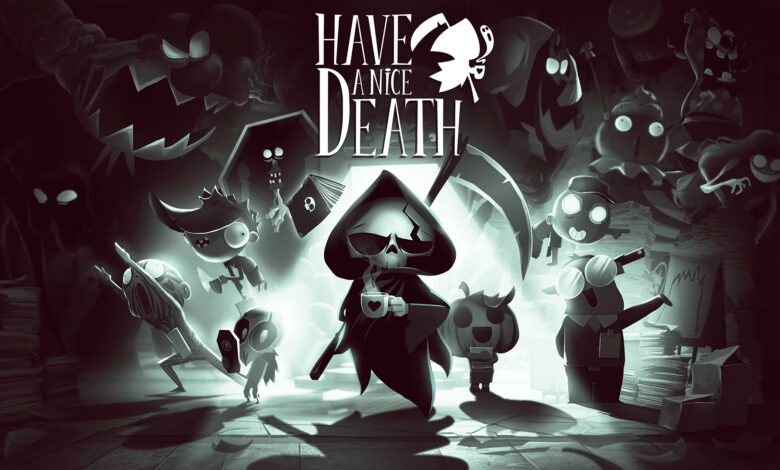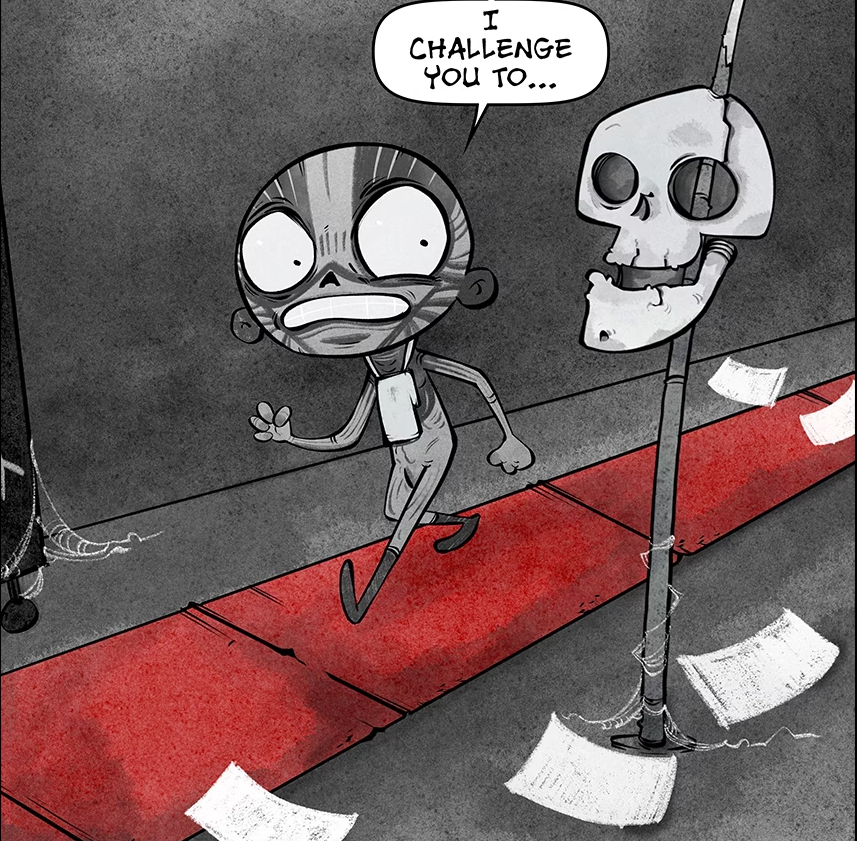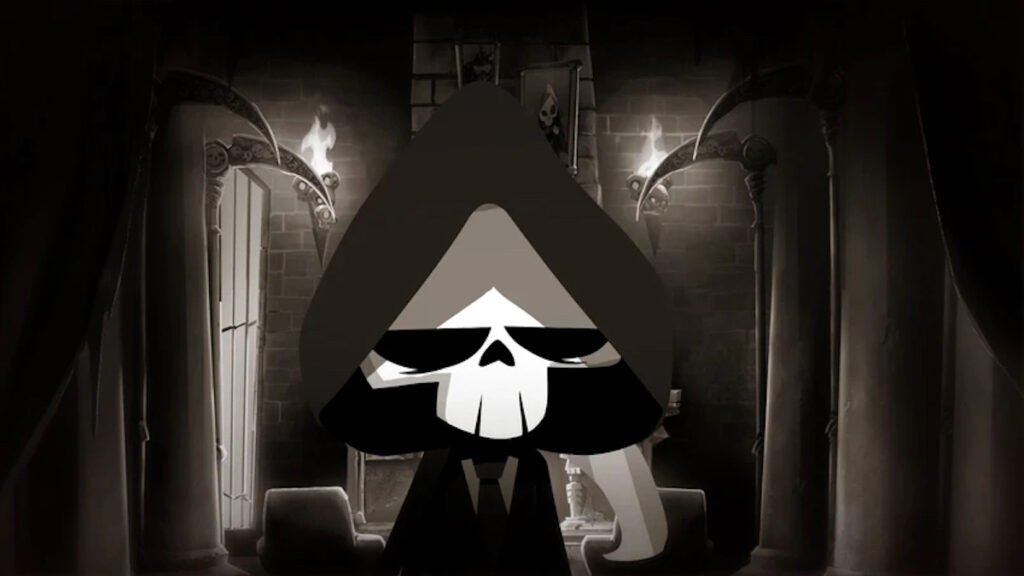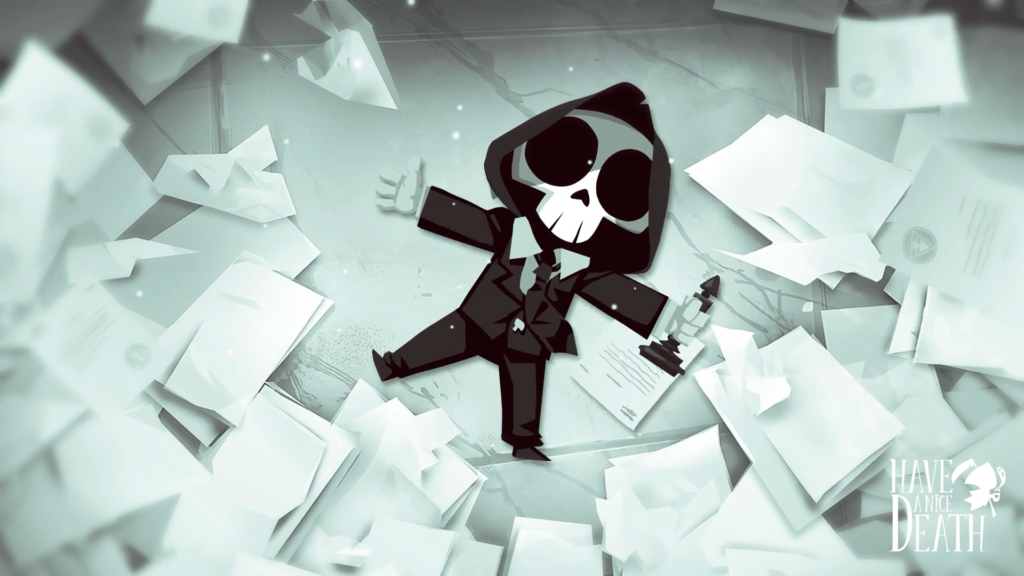Have a Nice Death: The history and legacy of the Grim Reaper
How Have a Nice Death keeps the Reaper's legacy alive (or rather undead may be the more appropriate term)

Have a Nice Death utilizes the most recognizable version of Death
A skeletal figure, often cloaked in a dark, hooded robe, carries a scythe for “reaping” human souls. For thousands of years, people have imagined and created visages to represent death. But this one, that of the Grim Reaper, has been the most common and enduring of all. How did this image come to be associated with death? What is the Grim Reaper’s history? And why is it also a perfect video game protagonist? Before the release of Gearbox Publishing’s upcoming Have a Nice Death, let’s look back on just how the Grim Reaper became what, then who he is.
Although difficult to track an exact date, the idea of a Grim Reaper seems to have appeared in Europe sometime around the 14th century CE. During that time Europe was dealing with the world’s worst pandemic, the Black Death. Believed to be the result of the Plague about one-third of Europe’s population perished. The original outbreak occurred during 1347 to 1351, with surges recurring several times after. One can assume the surviving Europeans had death on their minds, and were looking for an image to represent this.
Why this skeletal figure? Skeletons are easily symbolic of death, they’re what’s left behind after the human body has decayed. How does the robe play into this? The garment is most likely reminiscent of outfits religious figures wore when conducting funerary services. And the scythe? The deadly-looking farm instrument was used in many agricultural harvesting practices of the time. Much like a farmer would use it to harvest wheat, the Grim Reaper would use his to harvest the life of mortals when their time on earth had ended.
To challenge Death to a contest

This Grim Reaper, basically Death personified, was a terrifying figure. At least he certainly started out that way. The image was so pervasive, it even appeared in religious texts. The Bible’s Book of Revelation 6:1-8 features the Four Horsemen of the Apocalypse, dark riders usher in calamities signaling the end of the world. Pestilence, War, Famine, and of course, Death riding a pale horse. He is, in most depictions, shown as the Reaper.
But this inevitable force was slowly being tempered. In the mid 1800s, poet Henry Wadsworth Longfellow wrote a poem entitled The Legend of Rabbi Ben Levi. In it, the Rabbi manages to trick Death into giving him his sword (which sometimes stand in for the scythe) to avoid his own demise. Levi is eventually forced (by God) to return it, but this is a very early example of Death appearing fallible, almost human-like. It’s also one of the first written ideas of ‘cheating death’ to avoid, or at least prolong, the time before a person’s reaping.
Indeed Ingmar Bergman’s The Seventh Seal is the quintessential example of playing Death for more time. And it was hilariously recreated in Bill & Ted’s Bogus Journey when the bodacious time-traveling duo beat death no less than seven times! Concepts like this made the Grim Reaper appear not only human, but a guy just doing his job.
It’s a dirty job, but someone’s gotta do it

Have a Nice Death features the Grim Reaper as a cog in the universal machine of birth, life, and death. But, of course, things happen to create obstacles in his path. This is another concept of humanizing the Grim Reaper that has its roots in literature and film.
Terry Pratchett’s Discoworld book series is a magical place, somewhat like, yet completely different than our own. But the Grim Reaper exists there, too. And, even though his looks are of the classic skeleton in robes with sickle part, he takes a more caring attitude towards humanity. He knows his job, does it well, and has great empathy towards the humans he reaps, even admiring some them. He even replaces the Hogfather (Discworld’s version of Santa Claus) so Discworld Christmas isn’t ruined.
Neil Gaiman’s Sandman features Death, the sister of the comic’s titular character Morpheus, as a young girl, very different from the classic look. However, she, too, feels a great connection with humanity. She is another great example of the anthropomorphizing of Death as a developed person who knows how important her job is. She takes it quite seriously, because she cares about her charges.
Can you fill the Reaper’s cloak?

Death as an antagonist in a game is an obvious use of the character. One of the most difficult versions of the Grim Reaper has to be the second to last level of the original NES Castlevania. But that version didn’t have much personality and really only existed so 16-year old me and my best friend could stay up till three in the morning DETERMINED to finally beat that difficult son of a… anyway.
However, as we’ve reached the place of Death no longer being the terrifying figure Ebenezer Scrooge saw as the Ghost of Christmas Past, he’s now more the bumbling everyday guy as portrayed by the Reapers in Dead Like Me. A world where the afterlife is a bureaucratic office-setting has led to a a plethora of games that have allowed players to take up the Reaper’s mantle and actually BE Death.
Taking on the mantle of the Grim Reaper has led to a variety of fun, challenging games. Little Reaper‘s Ollie inhabits a colorful afterlife of hacking, slashing puzzles. Death’s daughter is featured in the parkour-inspired Rouge Reaper. The diminutive but lovable Death Jr. series has the Reaper’s son getting in to all sorts of shenanigans. Grim Fandango allows players to explore an entire afterlife themed on the Mexican Day of the Dead celebration. A paper-work-heavy afterlife is featured in the strategy Death & Taxes game.
Don’t fear the Reaper
And of course, the upcoming Have a Nice Death features an adorably stylized Grim Reaper battling through an artistically detailed bureaucratic afterlife to take down his out of control Sorrows. But all these games have one thing in common. The Grim Reaper is fun. He’s relatable. He’s someone you can empathize with. And his scythe is a pretty cool weapon to hack bad guys with.
Actually playing as Death is the final evolution of humanity accepting our inevitable fate. Death is no longer a figure to be feared in the shadows. We don’t need to run from him. We’ve taken him into our culture and made him a companion on our journey. We’re comfortable controlling and playing him. We know he’ll come for us all in the end, but he’s a companion we might not know when we’ll meet but we’ve all got an appointment with.
Have a Nice Death launches on March 22, 2023 on the Nintendo Switch and the Steam Store. Are you excited for this fun, artistic look at the afterlife? Leave us a comment!

